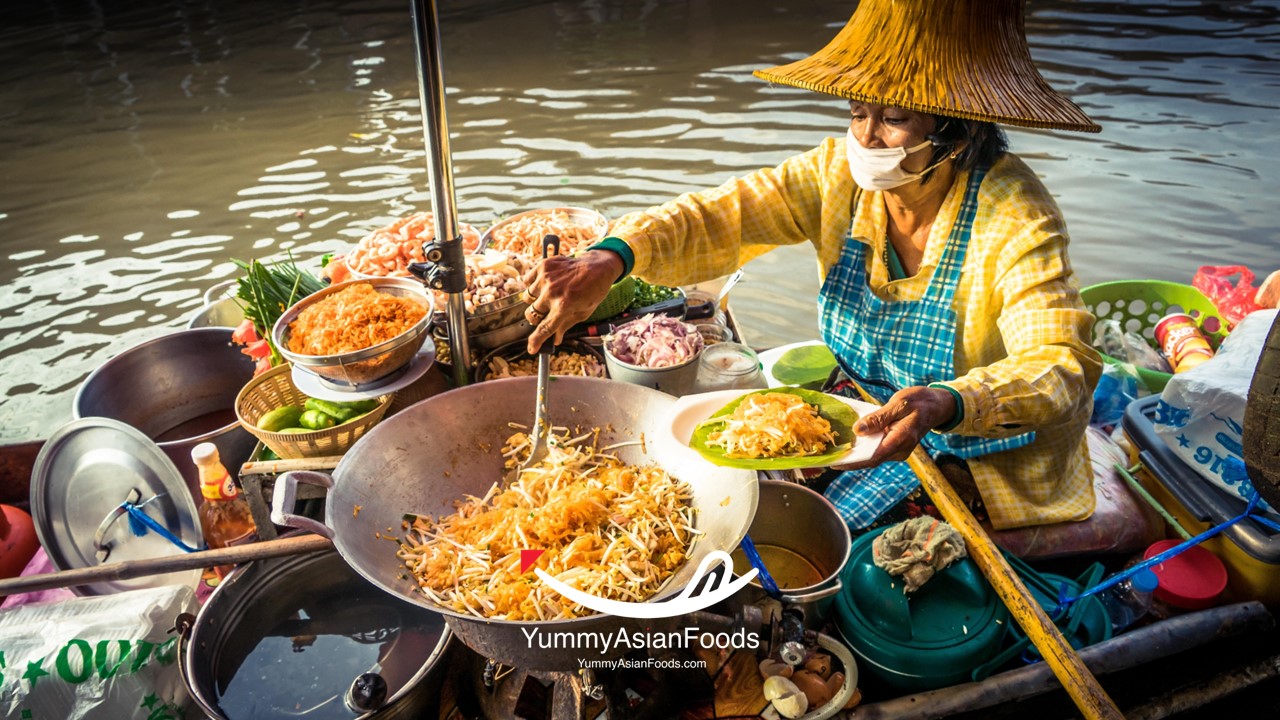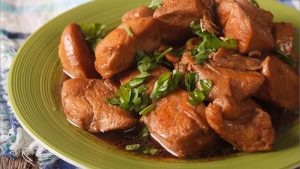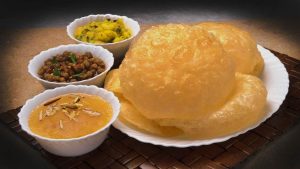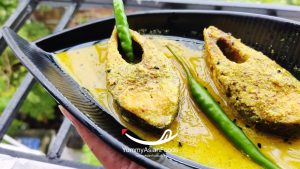Table of Contents
ToggleEmbark on a culinary adventure through the vibrant and tantalizing world of traditional Thai cuisines, where each dish is a symphony of flavors and textures that will transport your taste buds to the bustling streets of Bangkok or the serene beaches of Phuket. From the iconic Pad Thai with its perfect balance of sweet, sour, and spicy notes to the aromatic Tom Yum soup that embodies the essence of Thai cooking, this article delves into 7 popular dishes that have captured hearts and palates around the globe. Whether you’re a seasoned food enthusiast craving an authentic culinary experience or a curious explorer eager to expand your gastronomic horizons, join us as we unravel the secrets behind these beloved Thai delicacies that promise to delight, surprise, and leave you craving for more.
Thai Cuisines: The Rich Flavors and History of Thailand
When it comes to various Thai cuisines, one cannot ignore the intricate tapestry of flavors and history that have shaped this vibrant culinary tradition. From the tangy kick of lemongrass and lime in Tom Yum Goong to the comforting creaminess of green curry, each dish tells a story that dates back centuries. Thailand’s culinary heritage is deeply rooted in combining sweet, spicy, sour, and salty elements in perfect harmony, creating a symphony of flavors that dance on your taste buds.
One fascinating aspect of Thai cuisine is its ability to reflect the country’s diverse cultural influences. With influences from Chinese stir-frying techniques to Indian spices and tropical ingredients, Thai dishes are a testament to Thailand’s rich history as a melting pot of different cultures. The meticulous preparation and presentation of these dishes also speak volumes about the importance placed on balance, texture, and aesthetic appeal in Thai culinary arts.
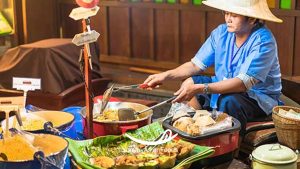
What are the Most Popular Traditional Thai Cuisines?
Several Thai cuisines are renowned for their complex flavors and aromatic spices, making them a favorite among food enthusiasts around the world. One of the most popular traditional Thai dishes is Pad Thai, which features stir-fried rice noodles with eggs, tofu, shrimp or chicken, bean sprouts, and peanuts. The combination of sweet, sour, salty, and spicy flavors in Pad Thai creates a harmonious taste that delights palates globally.
Another beloved Thai dish is Tom Yum Goong, a hot and sour shrimp soup infused with lemongrass, kaffir lime leaves, galangal root, and chili peppers. This flavorful soup is renowned for its vibrant colors and invigorating aroma that tantalizes the senses. In Thailand, Tom Yum Goong is often enjoyed as a comforting meal during rainy days or as an appetizer to stimulate the appetite before indulging in other delicious dishes on the dining table.
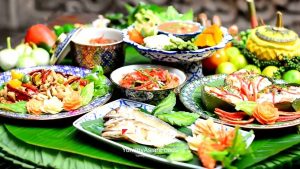
Here are 7 most popular traditional Thai cuisines:
1. Pad Thai: Iconic stir-fried noodle Thai cuisine
Pad Thai, an iconic stir-fried noodle dish, has several variations that make Thai cuisine a flavorful and aromatic culinary delight that has captured the hearts of food enthusiasts worldwide. Thai cuisines like Pad Thai are known for their perfect balance of sweet, sour, salty, and spicy flavors that create a harmonious taste sensation on the palate. Each bite of Pad Thai brings a burst of exciting flavors, from the tangy tamarind sauce to the crunchy peanuts and fresh herbs sprinkled on top.
What sets Pad Thai apart is its beautiful balance of sweet, salty, sour, and spicy flavors that dance harmoniously on the palate. The combination of tender rice noodles, plump shrimp or chicken, crunchy bean sprouts, and earthy peanuts creates a symphony of textures that is both comforting and exciting to eat.
One interesting fact about Pad Thai is its versatility in ingredients and preparation methods. While traditionally made with shrimp or chicken as the protein base, vegetarians can enjoy a delightful rendition featuring tofu or mixed vegetables. The recipe’s adaptability showcases the creative possibilities within Thai cuisine while still honoring the authentic flavors that make Pad Thai unforgettable.
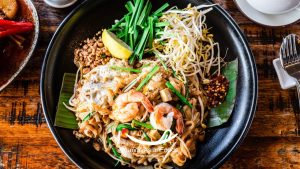
2. Tom Yum: Spicy and sour soup Thai cuisine
One of the most beloved Thai cuisines is the Tom Yum, a spicy and sour soup that tantalizes the taste buds with its bold flavors. The combination of lemongrass, kaffir lime leaves, galangal, and chili peppers creates a fragrant and invigorating broth that is both comforting and energizing. Beyond its vibrant taste profile, Tom Yum is also appreciated for its health benefits, as the ingredients are known for their immune-boosting and anti-inflammatory properties.
What sets Tom Yum apart from other soups is its ability to balance contrasting flavors in perfect harmony. The spiciness from the chili peppers provides a kick of heat, while the tanginess from lime juice adds a refreshing zing. This dynamic interplay of flavors makes each spoonful a symphony for the senses, leaving you craving more with every bite. Whether enjoyed on a cold day to warm up or as a light and refreshing meal during hot summers, Tom Yum never fails to deliver an unforgettable culinary experience that showcases the essence of Thai cuisine at its finest.
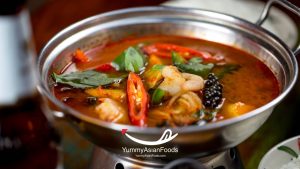
3. Green Curry: Creamy coconut-based curry Thai cuisine
Stepping into various Thai cuisines means embarking on a culinary journey filled with vibrant flavors and aromatic spices. Amongst the plethora of traditional dishes that Thailand has to offer, green curry stands out as a creamy coconut-based delight that captivates taste buds with its unique blend of ingredients. This iconic dish, known for its rich green hue and fragrant aroma, is a testament to the intricate balance of flavors found in Thai cooking.
Green Curry beautifully marries the creaminess of coconut milk with the subtle heat of green chilies, creating a harmonious symphony for the palate. The addition of aromatic herbs like lemongrass and kaffir lime leaves lends a refreshing and citrusy zing to this luxurious curry. Embracing green curry is not just about savoring a meal; it’s an experience that transports you to the bustling streets of Thailand, where food culture is deeply intertwined with community and tradition.
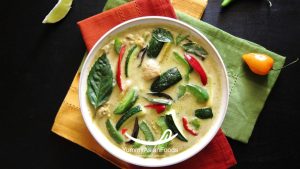
4. Som Tum: Refreshing green papaya salad Thai cuisines
Som Tum, also known as green papaya salad, is one of the delightful and refreshing Thai cuisines that perfectly encapsulates the balance of flavors in Thai cuisine. The combination of shredded green papaya, cherry tomatoes, long beans, peanuts, and a tangy dressing made from lime juice, fish sauce, and chili creates a symphony of tastes in every bite. What sets Som Tum apart is its unique blend of sweet, sour, spicy, and savory notes that dance on your palate, leaving you craving for more.
One interesting aspect of Som Tum is its versatility. While typically enjoyed as a salad on its own or alongside grilled meats or sticky rice, some variations include the addition of salted crab or dried shrimp for extra umami depth. This adaptability makes Som Tum a popular choice among both locals and tourists looking to explore the diverse and dynamic flavors of Thai cuisine. Whether you like it fiery hot or mild with a hint of sweetness, Som Tum offers something for everyone seeking an authentic taste of Thailand.
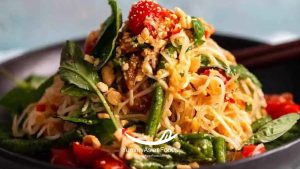
5. Massaman Curry: Rich curry with tender meat and potato Thai cuisine
Massaman Curry, a standout dish in the realm of traditional Thai cuisines, boasts a rich and aromatic blend of spices that tantalize the taste buds. This unique curry is characterized by its creamy coconut milk base, tender chunks of meat—usually beef or chicken—and soft potatoes that soak up all the flavorful goodness. The combination of sweet, savory, and slightly spicy flavors creates a symphony on the palate that is truly unforgettable.
One intriguing aspect of Massaman Curry lies in its historical roots. Originating from the Muslim communities in Thailand centuries ago, this dish reflects a fusion of cultural influences that have stood the test of time. It’s fascinating to think about how ingredients like cinnamon, cardamom, and peanuts found their way into this curry through trade routes and migrations, creating a culinary masterpiece loved by many around the world.
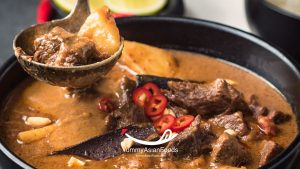
6. Mango Sticky Rice: Sweet and creamy dessert
Mango Sticky Rice is a delightful Thai dessert that captures the essence of sweetness and creaminess in every bite. The combination of ripe mango slices layered on top of sticky glutinous rice drizzled with coconut milk creates a sensation of flavors that dance harmoniously on the palate. What sets this dish apart is the perfect balance between textures: the soft, juicy mango complements the chewy rice, while the creamy coconut milk ties everything together for a luxurious taste experience.
Indulging in mango sticky rice is like taking a journey to Thailand through your taste buds, as it encapsulates not just flavors but also cultural richness. This beloved dessert showcases how Thai cuisine expertly fuses different elements to create a symphony of tastes that linger long after the last spoonful. Whether enjoyed as a sweet treat or as a comforting finale to a spicy meal, mango sticky rice embodies the essence of Thai culinary mastery that has captivated food enthusiasts worldwide.
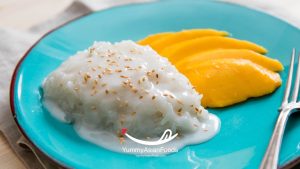
7. Khanom Krok: Coconut pancakes with a twist
If you think you’ve tried every type of pancake out there, think again. Khanom Krok brings a unique twist to the classic breakfast treat by infusing it with the irresistible flavors of coconut. These bite-sized delights showcase the perfect balance of crispy on the outside and soft on the inside, making them a must-try for any food enthusiast. What sets Khanom Krok apart is its versatility in flavor combinations, ranging from sweet to savory, ensuring there’s something for everyone’s taste buds.
The beauty of Thai cuisine lies in its ability to blend contrasting flavors and textures seamlessly, and Khanom Krok is no exception. This dish embodies the essence of Thai culinary artistry by combining the sweetness of coconut milk with a hint of saltiness to create a harmonious symphony on your palate. The process of making Khanom Krok is just as captivating as its taste; watching skilled vendors pour batter into heated molds and expertly flip each pancake until golden brown is a feast for both your eyes and your appetite.
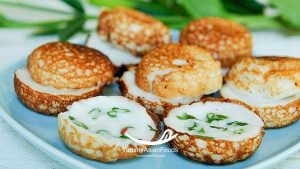
History and Influences of Traditional Thai Cuisines
The history of several traditional Thai cuisines is a rich tapestry woven from diverse cultural influences that have shaped the unique flavors and techniques we enjoy today. From Indian spices brought over by traders to Chinese cooking methods introduced by immigrants, Thailand’s culinary landscape is a melting pot of different traditions. The blending of these influences gave rise to dishes like Pad Thai, a stir-fried noodle dish that perfectly encapsulates the fusion of sweet, sour, salty, and spicy flavors.
Furthermore, the abundance of fresh herbs and aromatic ingredients in Thai cuisine can be attributed to Thailand’s tropical climate and fertile soil. This environment provides an ideal setting for cultivating ingredients like lemongrass, galangal, kaffir lime leaves, and Thai basil—essential components that lend Thai dishes their distinct fragrances and tastes. Additionally, the artful presentation of food in Thailand reflects not only aesthetic values but also spiritual beliefs ingrained in Thai culture, where balance and harmony are key principles in both cooking and life.
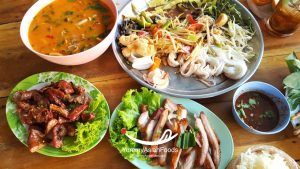
Key Ingredients and Flavors of Traditional Thai Cuisines
Many traditional Thai cuisines are a harmonious blend of five key flavors: sweet, sour, spicy, salty, and bitter. These flavors are brought to life through the use of key ingredients such as lemongrass, galangal, kaffir lime leaves, and Thai basil. Lemongrass adds a refreshing citrusy note to dishes like tom yum soup, while galangal provides a subtle heat and depth to curries.
One cannot speak of traditional Thai cuisine without mentioning the importance of coconut milk in creating rich and creamy textures. Coconut milk is commonly used in dishes like green curry and mango sticky rice for its sweetness and versatility. Another essential ingredient is fish sauce, which imparts a deep umami flavor to stir-fries and dipping sauces. The intricate balance of these key ingredients and flavors represents the essence of authentic Thai cooking, which continues to captivate food enthusiasts around the world.
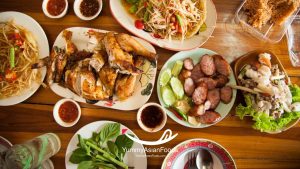
Regional Varieties and Specialties of Traditional Thai Cuisines
One of the most intriguing aspects of traditional Thai cuisine is the diverse range of regional varieties and specialties that showcase the country’s rich culinary heritage. In Northern Thailand, dishes like Khao Soi, a coconut curry noodle soup, and Sai Oua, a flavorful herb-packed sausage, reflect influences from neighboring countries such as Myanmar and China. Moving down to Southern Thailand, unique seafood-centric dishes like Gaeng Som Pla, a sour fish curry, and Khao Yum Pak Tai, a vibrant rice salad featuring local herbs and vegetables, are popular delicacies that capture the essence of this tropical region.
Central Thailand boasts iconic Thai cuisines like Pad Thai and Tom Yum Goong, which have gained international acclaim for their bold flavors and aromatic profiles. The use of fresh herbs like lemongrass, galangal, and kaffir lime leaves in these recipes adds complexity to the dishes while highlighting the region’s agricultural abundance. Each regional variety highlights distinct cooking techniques, flavor profiles, and ingredient combinations that offer an immersive culinary experience for both locals and visitors looking to explore Thailand’s gastronomic landscape in depth.
Cooking Techniques and Tools for Cooking Traditional Thai Cuisines
When it comes to cooking several traditional Thai cuisines, mastering the techniques and using the right tools is essential to achieving authentic flavors. One of the most commonly used techniques in Thai cooking is stir-frying, which involves cooking ingredients quickly over high heat to preserve their textures and flavors. To achieve this, a wok is a versatile tool that allows for even distribution of heat and quick movement of ingredients.
Another important technique in Thai cuisine is pounding and grinding herbs and spices to make aromatic pastes, such as curry paste or chili paste. Traditionally, a mortar and pestle are used for this purpose, allowing the flavors to be released slowly and creating a rich depth of taste. Additionally, steaming is a common technique used in preparing dishes like steamed fish with lime and garlic sauce or sticky rice. A bamboo steamer helps maintain moisture while imparting a subtle earthy flavor that complements the dish perfectly. Mastering these techniques with the right tools will elevate your traditional Thai cooking experience to new heights.
Vegan/Vegetarian Options and Adaptations of Traditional Thai Cuisines
When it comes to various traditional Thai cuisines, the vibrant flavors and exotic ingredients are what make them so enticing. For those following a vegan or vegetarian diet, there are plenty of options to still enjoy the essence of Thai dishes without compromising on taste. One popular adaptation is replacing meat with tofu or tempeh in dishes like Pad Thai or Green Curry, which adds a unique texture and absorbs the flavorful sauces beautifully.
Moreover, many traditional Thai recipes already incorporate an abundance of fresh vegetables and herbs, making it inherently easy to adapt them to suit vegans and vegetarians. Dishes like Som Tum (Green Papaya Salad) can easily be made without fish sauce or shrimp added while still retaining its spicy and tangy flavors. By exploring these adaptations, not only do plant-based eaters get to experience the rich tapestry of Thai cuisine, but they also contribute to sustainable food choices that benefit both health and the environment.
What are the Most Dominant Herbs and Spices in Various Thai Cuisines?
Many Thai cuisines are renowned for their bold and unique flavors, largely attributed to the diverse herbs and spices used in traditional dishes. Among the most dominant herbs and spices in Thai cuisine are lemongrass, galangal, and kaffir lime leaves. Lemongrass lends a refreshing citrusy aroma and flavor to dishes like Tom Yum soup, while galangal adds a warm, piney undertone to curries such as green curry.
Another key player in Thai cuisine is Thai basil, known for its distinctive aroma that elevates dishes like Pad Krapow Moo (stir-fried basil with pork) to another level of deliciousness. Additionally, dried red chilies are frequently used to lend heat and depth of flavor to many Thai dishes. These herbs and spices play pivotal roles in creating the harmonious balance of sweet, sour, salty, and spicy flavors that define authentic Thai cuisine.
Summing Up: Embrace the Flavors of Traditional Thai Cuisines
In conclusion, the vibrant and diverse flavors of traditional Thai cuisines are a culinary journey worth embracing. From the fragrant coconut milk-based curries to the fiery sweetness of Pad Thai, each dish offers a unique sensory experience that captures the essence of Thailand’s rich culture and heritage. The balance of sweet, salty, sour, and spicy flavors in dishes like Som Tum and Tom Yum signify the intricate harmony that defines Thai cuisine.
Embracing a multitude of traditional Thai cuisines goes beyond just tasting delicious food; it is an opportunity to explore a culinary tradition that has been perfected over centuries. By indulging in dishes like green curry or masaman curry, one can appreciate the careful blending of herbs and spices that create unforgettable taste profiles. Additionally, immersing oneself in the experience of dining at local markets or street stalls adds an authentic touch to savoring these treasured dishes. Let yourself be transported to the bustling streets of Bangkok or the serene beaches of Phuket through every bite of traditional Thai cuisine—each flavor tells a story waiting to be discovered.


